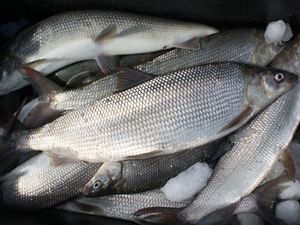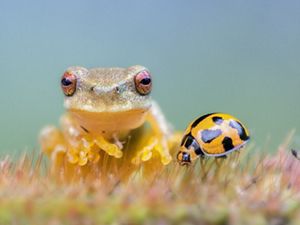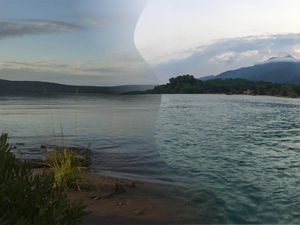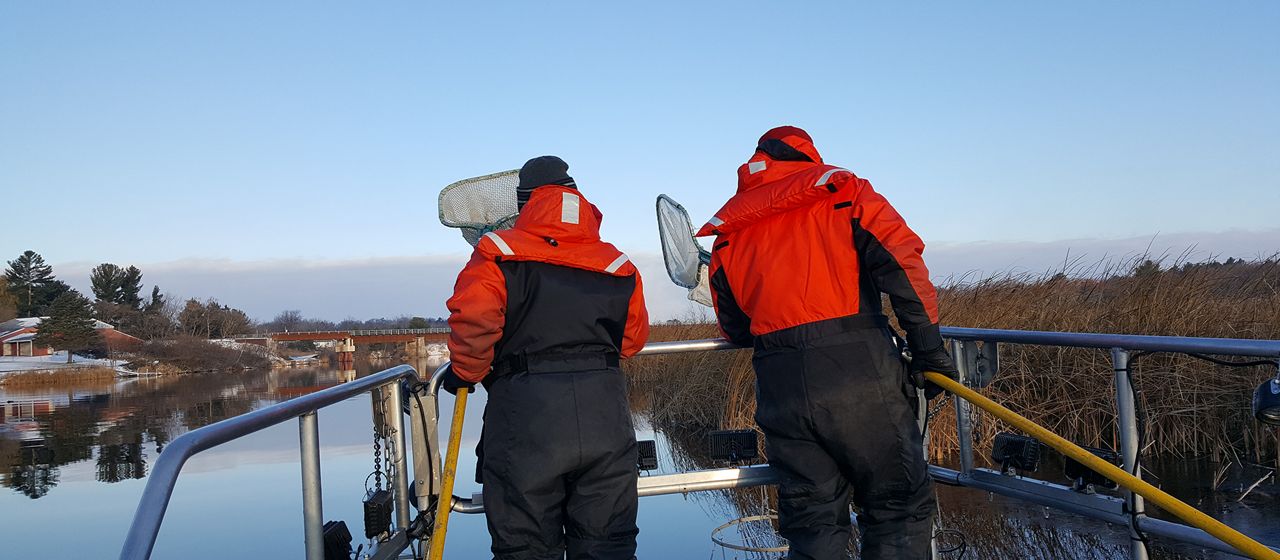
Searching for Whitefish Are lake whitefish returning to Michigan rivers to lay their eggs? These fisheries experts are looking to find out. © Matt Herbert/TNC
Have you ever been curious about how fisheries scientists conduct their fieldwork? My cousins have, and I wanted to hear their guesses before I explained. The first thought we just sat on a pier or a boat all day with fishing rods and caught fish one by one. The second was closer, they figured we would set up nets and traps and check them now and then. A lot of projects utilize these methods, but for our work that is not the most effective.
Finally, I told them how we really do it, by electrofishing, and they were fascinated. Now, I have been deemed the “fish zapper” at family events. Today, I’m going to share with you what I shared with them: the history behind our work with lake whitefish, what a day in the field looks like, and the importance of these fish for the biodiversity of the Great Lakes.
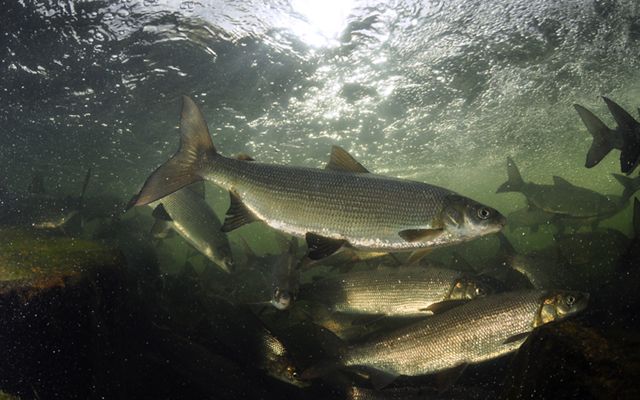
Great Lakes News
Get the latest updates about conservation work in Michigan.
History of Lake Whitefish in the Great Lakes
Lake whitefish, Coregonus clupeaformis, is a member of the trout family and is native to the Great Lakes. These fish are not only an important piece of the biodiversity puzzle in the area, but they are also delicious and an economic asset for commercial fisheries. Tribal nations across the Great Lakes Basin value the species and have been fishing for lake whitefish long before Europeans settled in the area.
In the 1800s, lake whitefish would travel up rivers during the winter in extraordinary numbers to lay their eggs. The eggs would get stuck in the nooks and crannies of the rocks along the river bottom where they’d be protected until they hatched in the springtime. There is limited scientific data from this time, so a lot of the information comes from newspaper articles, reports from fishermen, and other anecdotes.
Quote
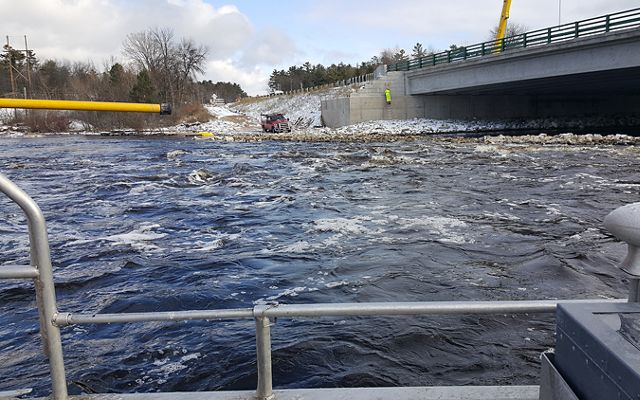
Near the end of the century, the logging industry was booming and, as a result, tons of sediment flowed downstream which then covered and destroyed the habitat lake whitefish needed to lay their eggs.
Near the end of the century, the logging industry was booming and, as a result, tons of sediment flowed downstream which then covered and destroyed the habitat lake whitefish needed to lay their eggs. This contributed to a dramatic decline of lake whitefish by the early 1900s, including a complete or at least near complete loss of river spawning lake whitefish throughout the Great Lakes.
Regulations and improved management have since been put in place and the quality of river habitats has improved greatly. Despite this, lake whitefish have not returned to our rivers, at least largely, to our knowledge. They do not lay their eggs in rivers anymore because the newer generations never imprinted on rivers. Some species, like lake whitefish and salmon, return to the waters in which they were hatched. If no lake whitefish are starting their lifecycle in our rivers at this time, they are less likely to return.
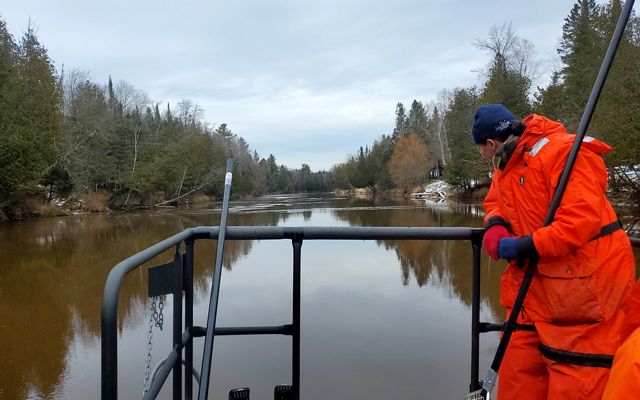
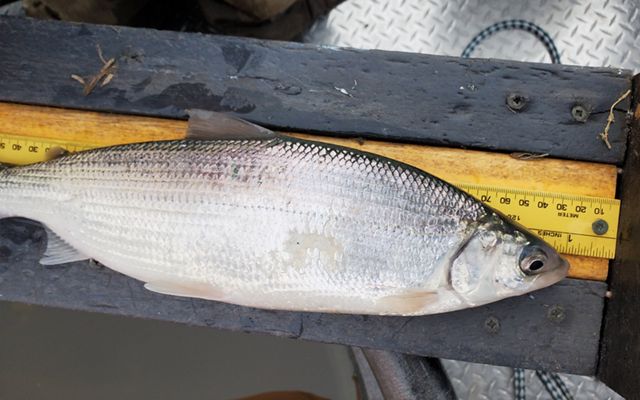
Lake Whitefish Make a Return to the Midwest
In recent years, lake whitefish have been found in the rivers of Green Bay, Wisconsin! We don’t have enough information yet to fully understand why they have started to use the rivers again, but it’s a clear sign that they can indeed return and hopefully fully reestablish a healthy population in Green Bay. This led our team to the question: If they are using the rivers in Green Bay, are they using the rivers in Michigan too?
Over the last few years our team, made up of partners from The Nature Conservancy (TNC), the Sault Ste. Marie Tribe of Chippewa Indians, the Michigan Department of Natural Resources (DNR), and the Little Traverse Bay Bands of Odawa Indians, has worked to answer this question. We have been sampling rivers on the Michigan side of Lake Michigan to see if there are lake whitefish populations using the rivers to lay their eggs.
The results of these surveys can help inform future conservation efforts. For example, if we find lake whitefish in these rivers, that is fantastic, and we may want to leave them alone and allow them to reestablish themselves. Or potentially consider ways to help encourage population growth (e.g., habitat improvement). If they aren’t, can we help encourage their re-establishment to rivers where we know they historically laid their eggs in the 1800s? Before we can even start thinking about conservation actions, we had to make sure to cross our t’s and dot our i’s. That’s where my work begins.
Conservation Fellowship Program
The Nature Conservancy-DTE Foundation Conservation Fellowship Program is focused on developing the conservation leaders of tomorrow by combining the opportunity to work on real-world conservation projects with a broad introduction to major conservation issues.
Into the Field (or Water) We Go
Before considering any conservation efforts, we have to understand whether there are healthy populations of lake whitefish already using rivers. This requires a lot of fieldwork over many years during the late fall. Every year in October and November, the project team is out on the water during periods of time when the water is cold enough for the fish to move up the river and then we use an electrofishing boat to catch them.
An electrofishing boat allows us to shock the water at low frequencies. When a fish comes within range, they get stunned and float up to the surface. The people on the boat scoop the fish up with nets, take measurements, clip one of their fins for genetic analysis so we can tell if we caught the same fish previously, and put the fish into a water tank in the boat to let it recuperate before we release it back into the river.
We do this work to establish if there is a lake whitefish population present in the area. If we don’t catch any, it doesn’t mean that there isn’t a population. The conditions may have not been right at the time. That’s why we go out multiple times during the season and over several years. The more years where we have surveyed, the more certain we are of where lake whitefish populations are and are not in our rivers, and we can use that information to inform future conservation efforts.
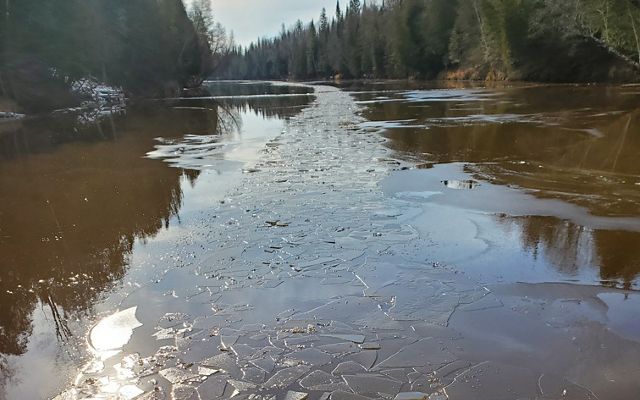
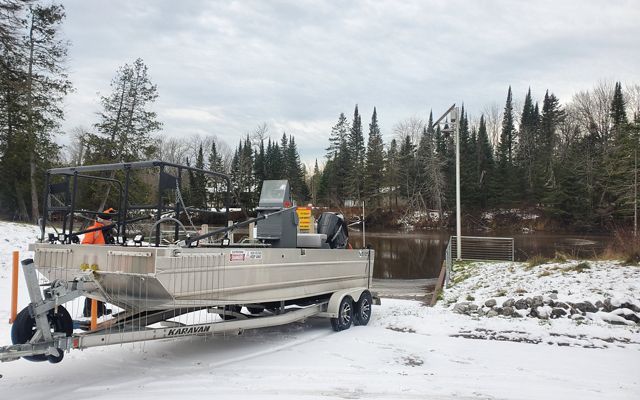
Why Lake Whitefish?
There is a complex history behind lake whitefish populations in the Great Lakes. You may be asking yourself, why do we go through all of this work for a fish? We do this because the fish is a crucial part of the aquatic ecosystems of the Great Lakes.
Biodiversity has been compromised by invasive species that have taken the spot of native fish in the food web. Other fisheries scientists have done incredible work to reduce the number of invasive species in the Great Lakes, but what happens to the gap left in the food web if we successfully remove all invasive fish species?
Quote
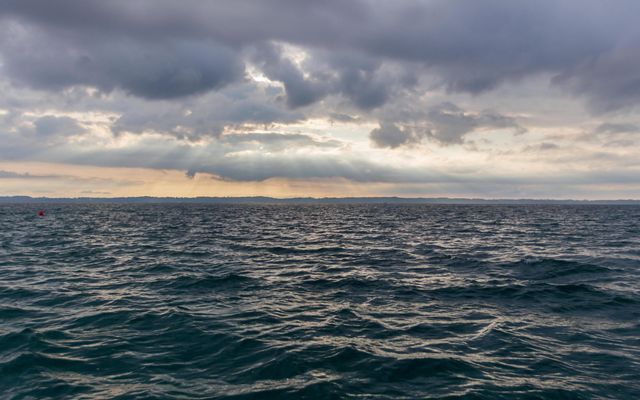
A food web is incredibly delicate and if one thing is out of balance, then there are ripple effects, some small and some much bigger, that influence the biodiversity of the rest of the ecosystem.
If we don’t take premeditated measures, this gap in the food web would cause major fish mortality throughout the Great Lakes. A food web is incredibly delicate and if one thing is out of balance, then there are ripple effects, some small and some much bigger, that influence the biodiversity of the rest of the ecosystem.
That’s why our work is critical at this moment in time. Restoring this native species has both ecological and economic benefits that will support the biodiversity of the Great Lakes for decades to come.

